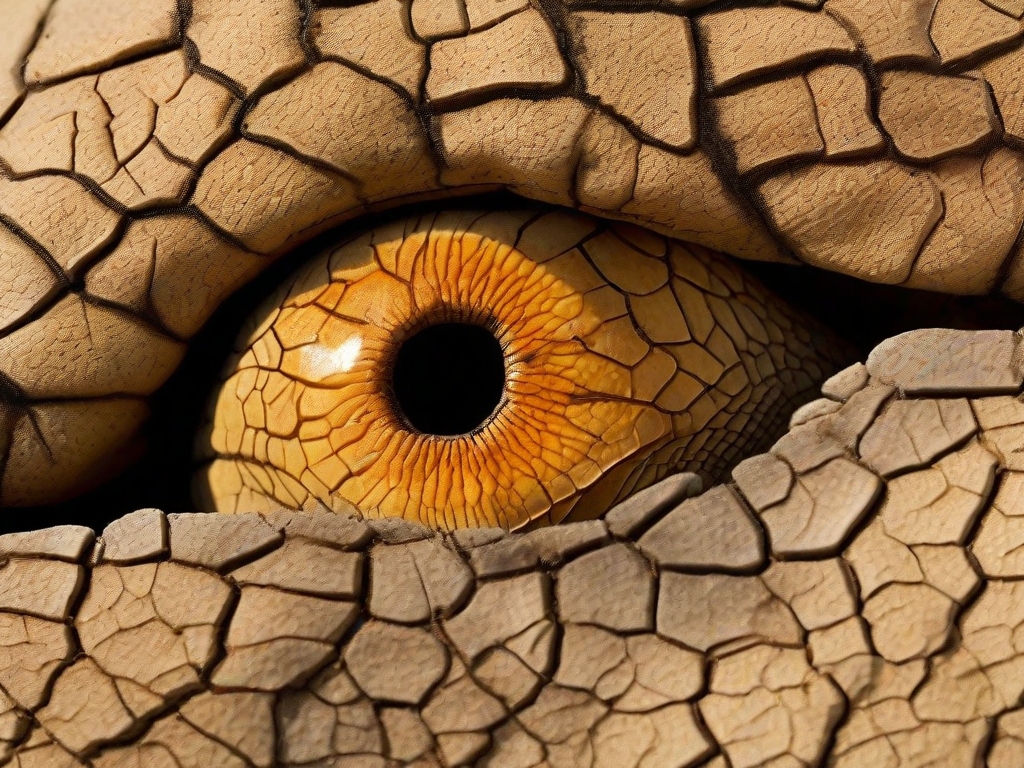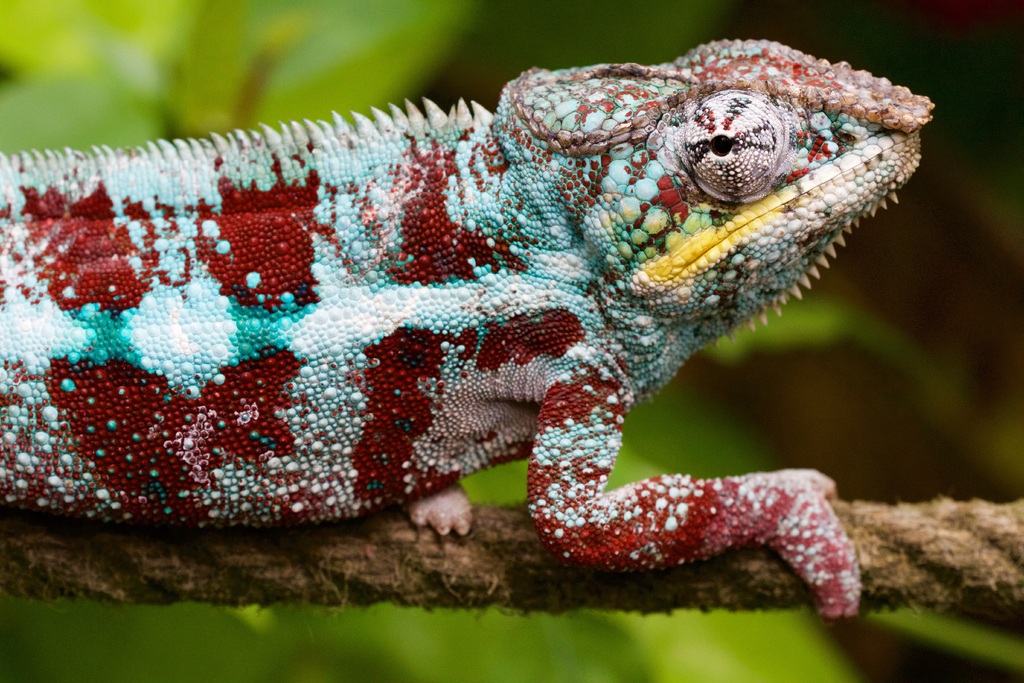Introduction
Across the vast expanses of our planet, the tale of climate change unravels daily, leaving ecosystems disrupted and species struggling to adapt. The magnitude of this change challenges scientists and ecologists to understand the impacts on various species, making model systems crucial. Lizards, a diverse and widespread group of reptiles, serve as one such model, shedding light on how ectotherms respond to the challenges of a changing climate.
Overview of Climate Change and its Effects on Ecosystems Globally
Climate change, a consequence of our industrialized world, affects every corner of our planet. Increased greenhouse gases result in global warming, leading to unpredictable weather patterns, melting ice caps, and rising sea levels. But beneath these headline-grabbing effects, subtler yet profoundly significant changes occur in ecosystems. Plants and animals are feeling the heat, quite literally, as they scramble to adapt or relocate to more suitable habitats. The resulting shifts in species distributions, phenologies, and behaviors impact interactions within ecological communities and the services these ecosystems provide to humanity.
Lizards as a Model System to Study Climate Change Impacts on Ectotherms
Lizards, being ectotherms, are creatures whose body temperature is determined by their environment. This dependence offers a unique lens into the specific challenges of a warming world. Lizards have been on Earth for more than 200 million years, surviving past climate shifts and diversifying into thousands of species across the globe. Their current distribution and life-history strategies offer valuable insights into the potential adaptive mechanisms that can be triggered in response to climate change. But as the pace of change accelerates, will they be quick enough to adapt, or will they need to catch up?
Activity Levels and Patterns Affected by Warming and Drying
Recent studies have shown significant alterations in lizard activity with rising temperatures. As ectotherms, lizards have limited windows of optimal temperatures for daily activities such as foraging, mating, and territory defense.
Research shows activity is restricted under hot and dry conditions.
A seminal study from 2015 observed that lizards showed a stark decrease in their activity when exposed to higher temperatures. The data revealed a worrying trend: as temperatures approached the lizards’ thermal limit, the reptiles were forced to retreat to shaded areas or burrows. This retreat reduced their effective activity period, leading to decreased opportunities for feeding and reproduction.
Table: Lizard Activity Pattern under Different Temperatures
| Temperature Range (°C) | Average Active Hours |
| 20-25 | 8 hours |
| 25-30 | 7 hours |
| 30-35 | 4 hours |
| > 35 | 2 hours |
Dual effect of heat and water limitation, not just heat stress
While it’s easy to pin the blame solely on heat, researchers have unearthed a dual adversary: dehydration. Lizards, especially those in arid regions, face an ever-decreasing water supply. Their activity is curtailed not just by the heat but also by the vital need to conserve moisture. In some regions, the combination of increased temperatures and reduced rainfall is a recipe for survival challenges.
Loss of shade is also an important factor limiting activity.
Habitat structure plays a pivotal role in the life of a lizard. Areas once rich in foliage providing ample shade and cooler microhabitats are becoming sparser due to human activities and changing climate patterns. Losing these crucial shady spots means lizards face more direct sunlight and heat exposure, further limiting their active hours.
Changes in Thermoregulation Behaviors : Climate Change Impacts on Lizards
Lizards are masters of thermoregulation, a vital skill set for creatures so intricately tied to the environmental thermostat. With increasing global temperatures, these ectothermic creatures have had to alter their daily routines, habitats, and physiological responses to ensure survival.
Seeking Shade, Reducing Activity During the Hottest Parts of the Day
Historically, many lizard species basked in the sun during the early morning, soaking up the heat after a cool night. However, with higher average temperatures, especially during peak afternoon periods, lizards retreat into shaded or underground refuges. This behavioral adaptation, while necessary, comes with the cost of reduced hunting and mating opportunities.
Some Species Show Flexibility in Altering Behaviors
Not all lizards react the same to rising temperatures. Some species, particularly those in highly variable environments, demonstrate impressive behavioral flexibility. These species can alter their activity patterns more fluidly, capitalizing on short periods of optimal temperatures or shifting their entire active window to cooler parts of the day or even the year.
Species Differences in Ability to Behaviorally Adapt
It’s worth noting that only some species possess the same adaptability level. Due to their specific environmental niches or evolutionary history, some find it more challenging to adjust. These species face higher risks, as their limited behavioral adaptability could make them more vulnerable to ongoing changes.
Physiological Effects of Heat and Dehydration Stress

Beyond behavior, the physiological machinery of lizards is also being tested by the changing climate.
Impacts on Metabolism, Energy Usage, and Water Balance
Elevated temperatures can lead to faster metabolic rates in ectotherms, including lizards. On the surface, this could mean enhanced energy availability for activities. However, it’s a double-edged sword. Faster metabolism requires more food intake, but reduced activity due to heat stress means less time for hunting. Furthermore, an accelerated metabolism can lead to quicker dehydration, especially when water is scarce.
Interactions Between Thermal and Hydric Stress
The challenges don’t just stem from individual factors like heat or water scarcity; their combination proves most testing. For instance, a lizard experiencing heat stress will seek shelter. Still, if it’s already dehydrated, it might need more energy to venture out and drink even when water is available. This intersection of stresses can have dire consequences for individual lizards and, by extension, their populations.
Constraints on Geographic Distributions
As with many species facing the wrath of climate change, lizards, too, are on the move. But their journey to new, more hospitable environments is fraught with challenges.
Climate Warming Forcing Range Shifts to Higher Elevations
With rising temperatures, lower altitudes, once bustling with lizard activity, are becoming inhospitable. Consequently, many species are migrating to higher elevations where temperatures are cooler. While this might seem like a logical solution, the uphill move has its share of challenges.
Challenges for Species Dispersing to New Environments
New environments mean new predators, competitors, and potential diseases. Lizards might not be equipped to handle these novel challenges, especially those that have evolved in specific niches. Additionally, higher altitudes often come with their environmental stresses, from thinner air to different vegetation types, which lizards must navigate.
High Elevation Environments Pose Multiple Physiological Stressors
While escaping the heat might be the primary motive for moving uphill, the cooler temperatures at high elevations can be stressors. The thinner atmosphere can affect respiratory efficiency, and the cooler temperatures can challenge the very thermal physiology that pushes lizards uphill in the first place.
Adaptive Potential and Evolutionary Responses
Understanding how lizards might evolve or adapt to the shifting climate is vital for predicting their future and ensuring survival.
Role of Phenotypic Plasticity in Facilitating Persistence
The ability of an organism to modify its phenotype (observable qualities) in response to environmental changes is referred to as phenotypic plasticity. This could mean altering their behavior, physiology, or even physical traits for lizards to better cope with new conditions. Some lizards, for example, have exhibited a more flexible daily activity schedule, avoiding extreme temperatures by being active during cooler times.
Evidence for Local Adaptation in Some Species or Populations
Local adaptation, where certain populations within a species develop traits beneficial to their specific environment, has been observed in some lizard populations. These beneficial traits offer a survival advantage in climate-induced challenges. For instance, populations in particularly hot environments might have developed a higher heat tolerance than those in cooler regions.
Limitations Due to Lack of Genetic Variation or Gene Flow
However, evolution is only a panacea for some of climate change’s challenges. There must be genetic variation for natural selection to act on in order for evolution to occur. In populations with little genetic diversity, there’s a risk they may need to adapt more quickly. Moreover, limited gene flow – the transfer of genetic variation from one population to another – can further constrain adaptive potential, especially if populations become isolated due to habitat fragmentation or other barriers.
Risks of Extinction and Population Declines : Climate Change Impacts on Lizards
The profound effects of climate change have led to concerns about the potential decline or even extinction of some lizard species.
Models Predict Future Impacts Based on Thermal Physiology
Using data on the thermal physiology of lizards, researchers have created models to predict future impacts of climate change on these reptiles. The models provide insights into potential range shifts, population declines, or extinction events. Alarmingly, many of these predictions indicate significant challenges for lizards in the coming decades.
Empirical Evidence for Population Declines Already Occurring
Unfortunately, the adverse effects of climate change on lizards are not just theoretical. Across various habitats worldwide, researchers have documented declining lizard populations. These declines are often attributed to direct climate impacts and secondary effects, such as changes in food availability or increased predation.
Interactions with Other Threats Like Habitat Loss
Climate change rarely acts in isolation. Other anthropogenic threats like habitat loss, pollution, or the introduction of invasive species often compound its effects. For lizards, the loss of their habitats due to deforestation or urbanization can be just as detrimental as the direct effects of rising temperatures. These combined threats can sometimes accelerate population declines, pushing species closer to extinction.
Conclusion on Climate Change Impacts on Lizards
The repercussions of climate change on the Earth’s diverse ecosystems are becoming increasingly evident, with lizards standing as a critical exemplar of the challenges many species confront. As ectotherms, these reptiles depend heavily on external environmental conditions, making them exceptionally vulnerable to climate shifts.
Key Unknowns and Areas for Future Research
While extensive research has been conducted on the impacts of climate change on lizards, there still needs to be more in our knowledge. Understanding the potential for genetic adaptation in lizards to new climates, the long-term impacts of heat and hydration stress, and how lizards will navigate changing predator-prey dynamics are all crucial areas of study. Furthermore, climate change’s cumulative impacts and other human-induced stresses like habitat fragmentation remain a significant concern.
Researchers are also keenly interested in the potential for “evolutionary rescue,” where rapid evolutionary change may allow some populations to adapt to changing climates, avoiding extinction. Investigations into which lizard species or populations might have the genetic diversity necessary for such rapid evolution could be invaluable.
Importance of Conservation Strategies to Promote Adaptation
It’s evident that lizards, like many species globally, face an uncertain future due to climate change. This makes the formulation and implementation of effective conservation strategies paramount. Protected areas need to be re-evaluated to ensure they encompass future suitable habitats for lizards rather than just their current ranges. Corridors that allow for migration and promote gene flow can also be essential.
Conservationists might also consider more proactive strategies for at-risk species, such as assisted migration or breeding programs. These efforts aim to introduce genetic diversity and strengthen populations against the pressures of climate change.
In summary, the plight of lizards in the face of climate change is a potent reminder of the far-reaching consequences of our global environmental challenges. We can mitigate some of these effects through dedicated research and conservation efforts, ensuring that lizards continue to play their essential roles in the world’s ecosystems. The balance between understanding and action will be key to safeguarding the planet’s biodiversity for future generations.


